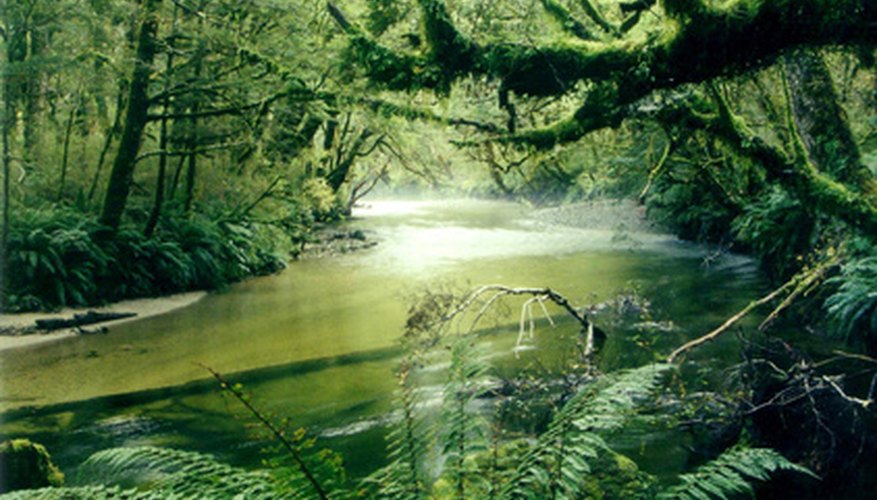Tropical rainforests have a diverse range of approximately 3,000 plant species, which include parasitic plants. These plants have difficulty obtaining the nutrients needed to survive, so they have evolved a system whereby they attach themselves to a host, such as a tree or shrub, and absorb nourishment. Parasitic plants are adapted to live on the forest floor or high up in the top canopy layer.
Rafflesia arnoldii
Rafflesia arnoldii grows on the floor of the tropical rainforest and is parasitic to rainforest lianas, or vines. It has the largest flower of any species, which gives off the aroma of rotting flesh that attracts flies to assist in pollination. The plant consists of threadlike growths on its host vine, Tetrastigma, from which it draws all its nourishment. Rafflesia arnoldii has no leaves, stem or roots, but it produces a huge flower that can be over a meter in width. This strange plant is found in rainforests of Malaysia.
- Rafflesia arnoldii grows on the floor of the tropical rainforest and is parasitic to rainforest lianas, or vines.
- Rafflesia arnoldii has no leaves, stem or roots, but it produces a huge flower that can be over a meter in width.
Thonningia sanguinea
Thonningia sanguinea lives on the floor of African tropical rainforests, producing rose-red flowers that stand out among the darkness of its leaves. The bright hue of the plant attracts its insect pollinators. It survives by obtaining its nutrition from surrounding trees and shrubs. The extracts of flowers of Thonningia sanguinea are used in traditional medicine in the Ivory Coast to treat diarrheal diseases.
- Thonningia sanguinea lives on the floor of African tropical rainforests, producing rose-red flowers that stand out among the darkness of its leaves.
Rainforest Mistletoe
Rainforest mistletoe is a partial parasite, obtaining all its water and nutrients from a host tree while carrying out photosynthesis through its leaves. The plant grows in the top canopy layer of the rainforest, producing large red flowers, and can be found in tropical rainforests in Australia. The mistletoe propagates by attracting the mistletoe bird that feeds on its berries. The bird only eats the soft part of the fruit, dispersing the seed through its droppings onto trees, which become new hosts to growing seedlings.
- Rainforest mistletoe is a partial parasite, obtaining all its water and nutrients from a host tree while carrying out photosynthesis through its leaves.
